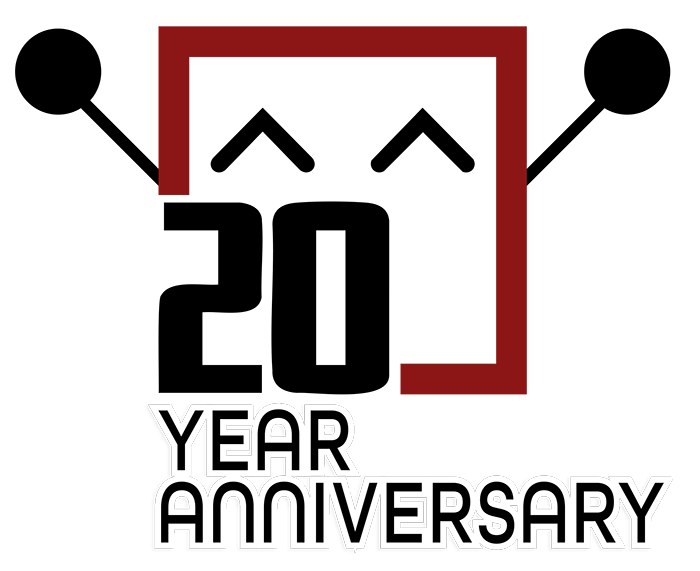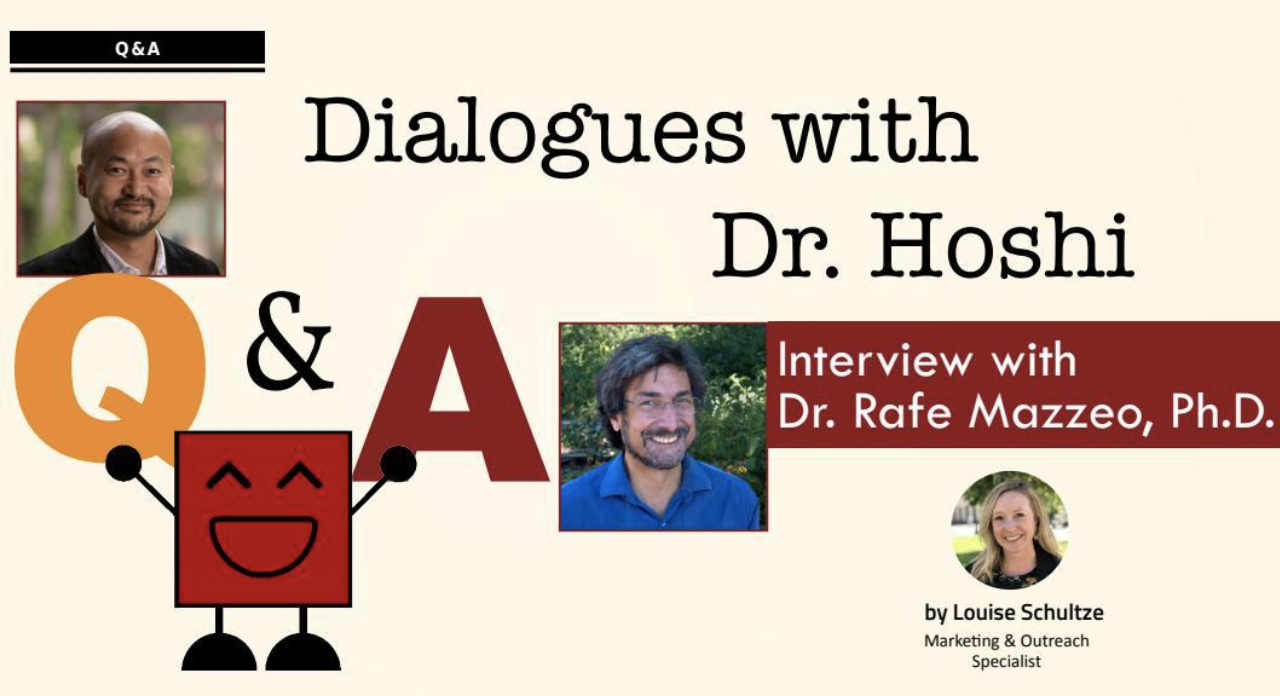By Louise Schultze, Marketing and Outreach Specialist
Editor’s Note: This Q&A is the first in a series of interviews conducted by Stanford OHS Head of School Dr. Tomohiro Hoshi. Dr. Rafe Mazzeo holds a Ph.D. in Mathematics from MIT and is an active researcher in this field. He has been a Professor of Mathematics at Stanford for 35 years, and is currently in his second term and sixth year as the Department Chair. He is also the Faculty Director for SPCS and Stanford Online High School, as well as the Director of the IAS/Park City Mathematics Institute.
Dr. Hoshi: Thank you so much for joining me in what I hope will be an exciting kickoff to a new series of interviews highlighting important topics in our community.
Dr. Mazzeo: I’m incredibly honored to take part; thank you for inviting me.
Dr. Hoshi: The global pandemic has impacted so many areas of our lives. Can you talk about the impact of the pandemic on education, specifically online education?
Dr. Mazzeo: It’s really shaken things up! People were aware of online learning before, but then they were forced into it. There have been some salubrious effects, but also a lot of very unfortunate ones. Public schools and universities were forced to fully adopt online technologies in a very short space of time, and many of them didn’t know how, and I have to say, many of them didn’t do it very well, at least at first. As you know, teachers are a dedicated and hard-working bunch and everyone was trying their best. This is on a scale no-one had ever faced before, and it was a huge challenge.
So from that point of view, Stanford Online High School was perfectly positioned during a critical time in terms of public perception of online education. Our instructors were already doing this wonderfully and there was no sudden transition for us. But for so many kids in other schools who all of a sudden just got put into Zoom classes in March 2020, it was a rude jolt and many of them had very difficult experiences. Many parents were also very disappointed. Looking at it from Stanford’s perspective, you’re dealing with more mature students where the parents were not really involved, and in some cases it went very well, but it was definitely not well-liked by all the students.
There’s been a lot of conversations with the University about what we’re going to take away from the experience with the pandemic, what lessons we learned with online education and what is useful that we will want to continue. I don’t think the answer to that is clear yet, but I will say a lesson I learned from this was that not only do the teachers have to be very well-prepared to teach online, but the students have to buy into the idea of learning online too. One of the key principles of the Stanford OHS is that students who choose to come here know what they’re getting into, and the onboarding process is very deliberate. That didn’t happen at public high schools, so there was a certain amount of resentment about the transition. A lot of students had to face ineffective – or in many cases also reasonably good – online teaching, but they themselves weren’t convinced about the process, and that left a bitter taste in their mouths about the experience. Of course there are also all the subtle issues about social aspects, maintaining motivation, and so on. I think in terms of how the pandemic will affect the broader world of online education, there are probably going to be many more schools who will be more aggressive about using some features of the online space. It may muddy the waters a bit for people to understand what we are doing. But I am optimistic that over time, a lot of people will be doing it well and in appropriate ways. On the other hand, it’s a bit of a miracle that we had this technology to allow most students some sort of way to stay connected through the pandemic, and for that we should all be grateful.
Dr. Hoshi: Prior to the pandemic, Stanford and other universities wanted to address the best way to support the matriculated students, and now so many students have lost precious learning opportunities. Are you concerned with incoming matriculated students being prepared for the university?
Dr. Mazzeo: You know, it’s something we’re actually very concerned about. We just don’t know how it’s going to go, but I’d say we’re in for a challenging year. There were a lot of people who were admitted in 2020 and deferred, and many of them have been away from academics for a year, and that’s difficult to get back into. One of the things that happened, even with good online teaching, was that a lot less curriculum was covered in many classes. Teachers just didn’t get as far because they had to develop adapted lesson plans that didn’t lend themselves very well to the online setting. So I think that a lot of incoming freshmen are going to be coming in under-prepared in one way or another. I wouldn’t be shocked if new students coming into Stanford OHS from public schools might be facing a similar challenge where you may see more students who are not quite as well prepared as you’re used to. But I’m confident that Stanford OHS instructors will be able to bring them all up to speed.
Dr. Hoshi: Have you found any benefits or maybe pleasant surprises in leading online learning at the university?
Dr. Mazzeo: One of the really pleasant surprises I had was that the Stanford Provost asked students to write about their experiences last year, what was going well in classes, and so on, and she wrote me with a bit of a shock saying “I didn’t expect this, but Math 51 was reported as the most popular and successful class this fall!” That class is regarded as a challenging intro class to multi-variable calculus and linear algebra. Part of why it succeeded is that we had a newly redesigned curriculum that turned out to transfer easily to the online model. Our instructors really jumped at the opportunity and challenge to present the subject in this way and they made it a really successful class.
Dr. Hoshi: Another nice thing that came out of the pandemic was that educators at both independent schools and public schools are being challenged to review what we’ve been doing in school and make shifts. Reconsidering our teaching and taking opportunities to learn new approaches.
Dr. Mazzeo: Yes, I think mathematicians can be conservative in terms of teaching styles. Certain aspects of how university classes are taught definitely needed upgrading. While we had been implementing changes in the last several years, the pandemic really forced our instructors to think anew about teaching methods, and to continue the work of presenting material in modern, engaging ways.
There’s a way of making traditional subject matter relevant, but it requires work and careful thinking, and I think that everybody has had to adapt their thinking about how to do that. The curriculum should be fluid and must adapt, while always keeping the goal of making students fully prepared.
The pedagogical method is something I want to address. The flipped classroom model that Stanford OHS often uses – for example, that students sometimes watch videos or read sections of the book or do worksheets before the class discussion – as opposed to the traditional lecture style where the students listen and take notes, is a relatively new model that can be very successful. Stanford OHS does a good job of this, I think. We have been moving toward adopting parts of this model in our large intro courses in the University’s math department. We find that there is a good middle ground between the flipped classroom, and traditional lecture style – the goal is that students stay engaged with what’s happening. They do some asynchronous material but the class is not entirely flipped. Of course, there is quite a lot of discussion and useful educational research about what works best!
Dr. Hoshi: We’re entering our 15th year as an online school! What message would you have for our students and families?
Dr. Mazzeo: Stanford OHS is a wonderful, innovative place. The more I learn about it, the more impressed I am by the spirit of the students, the ability of the community to rise to challenges -- and the quality of the instructors at Stanford OHS is simply unmatched. The school is a unique place because it provides so many opportunities to such a wide variety of students and in such interesting ways!
Whether online schooling in the Stanford OHS model can be truly successful started out as an open question, but I think that we have proved how effective it can be. Now there are many people across the University who know that Stanford OHS exists, and who realize what an innovative and significant part of Stanford it has become. It fits very well within the University’s broader mission and goals.
I am also gratified by the very passionate parent community that has been so dedicated and involved. I hope they all realize that their investment in the well-being of the school is extremely important in helping the school to succeed. You just need to look at the range of accomplishments of students, and the families who are very happy with the whole experience, and help make it even better. As a Stanford OHS parent myself (both my daughters are Stanford OHS students) I genuinely believe that this is an extraordinarily good place for their education.

